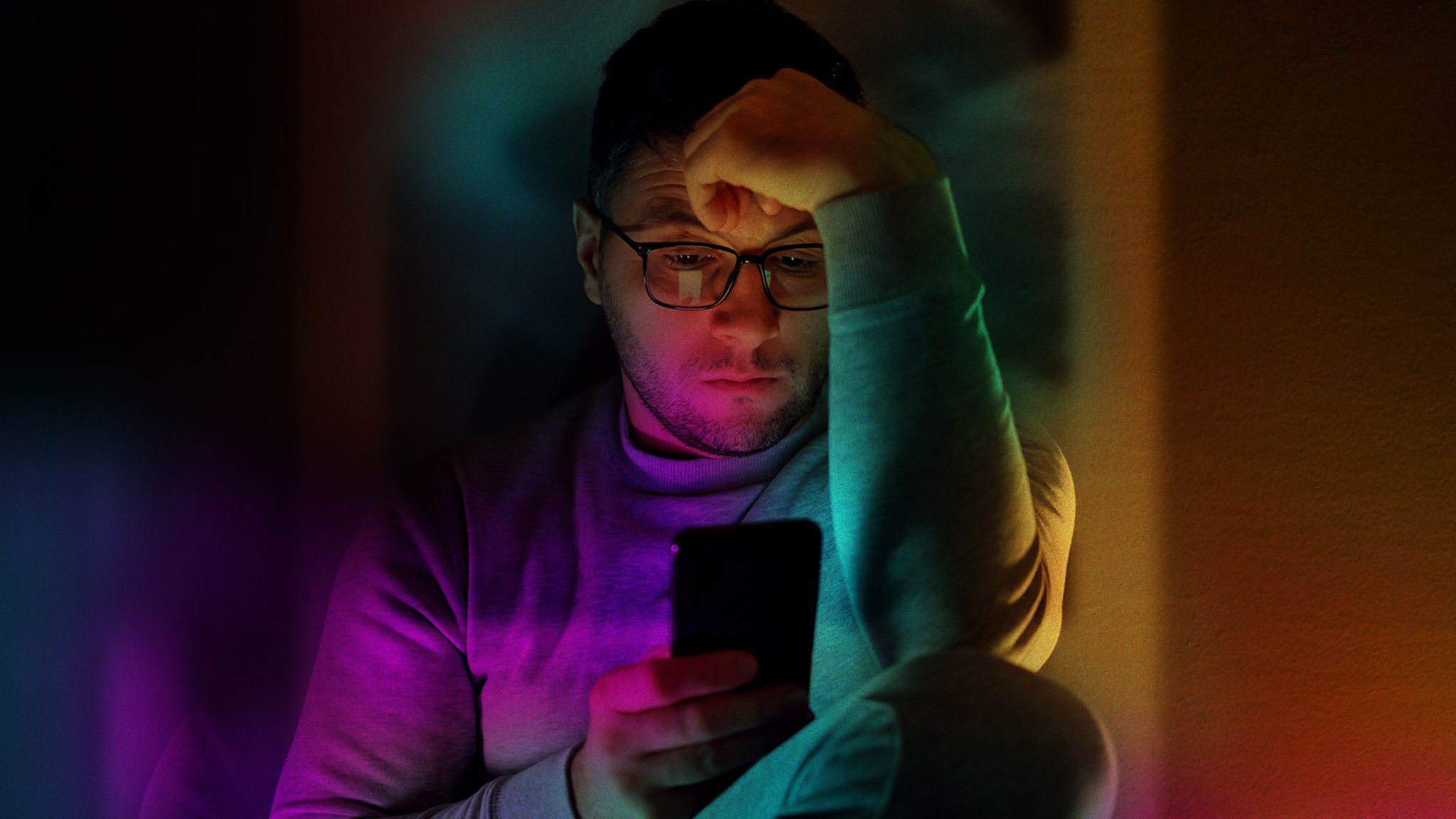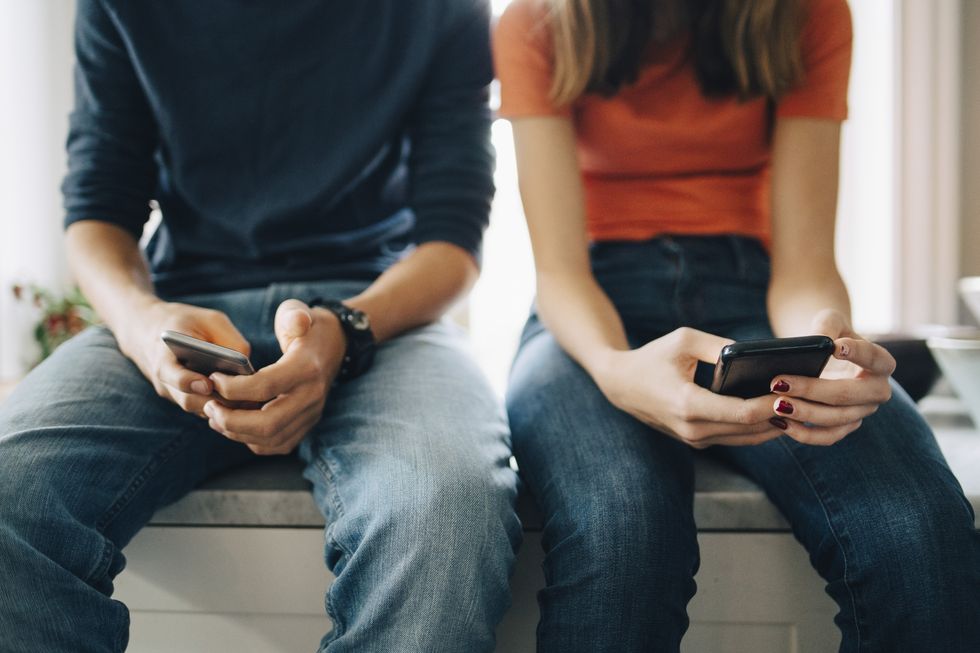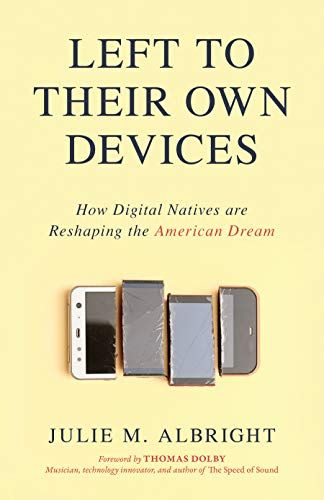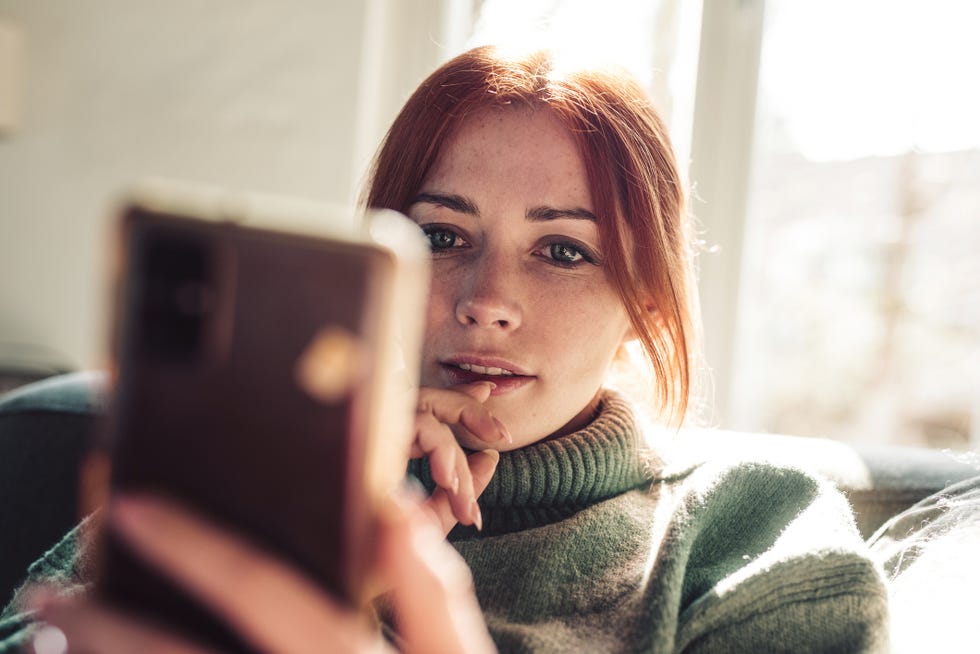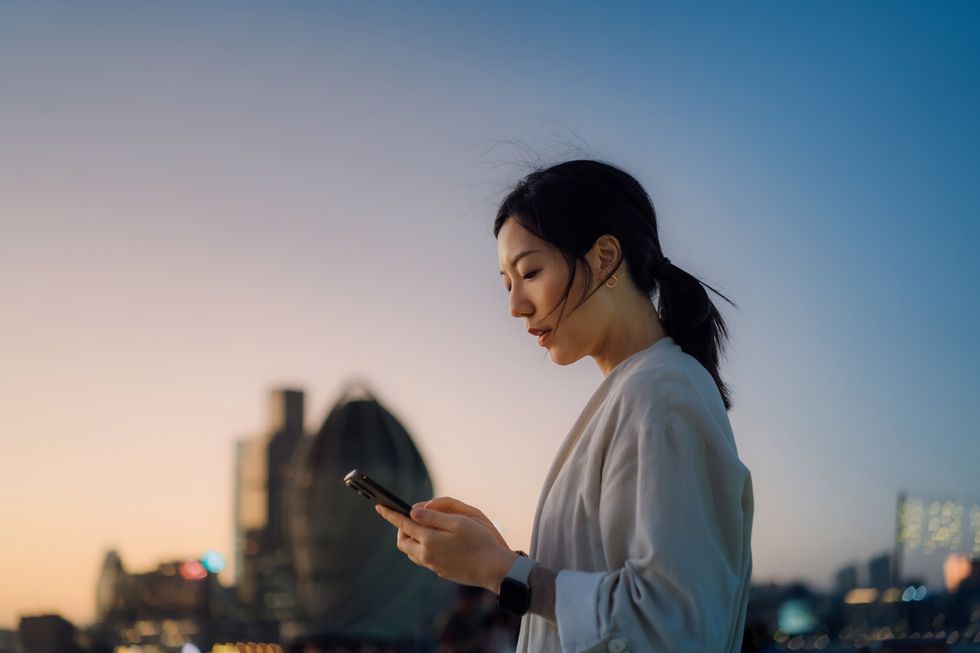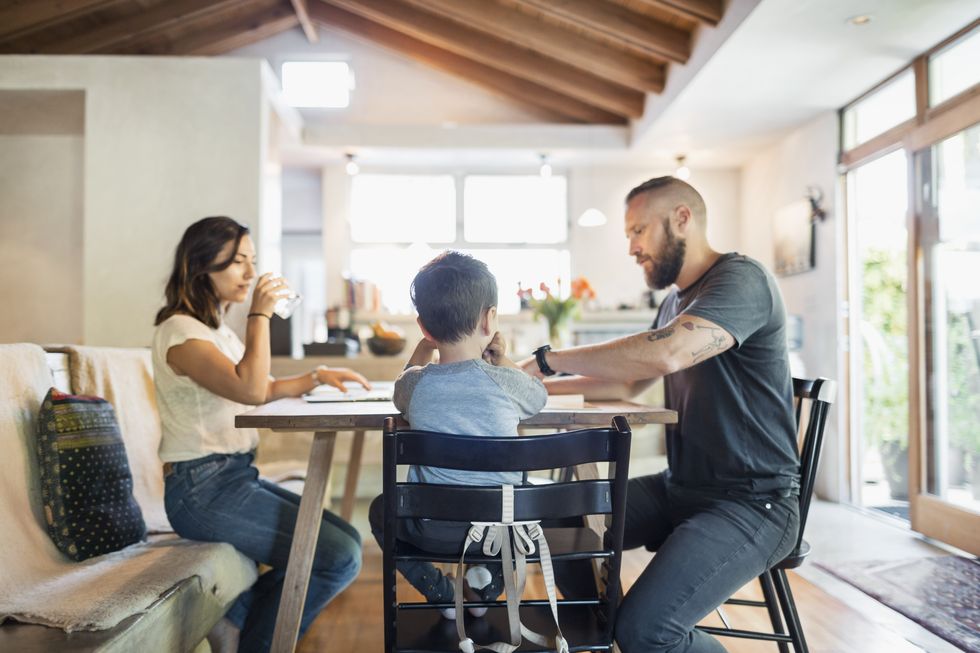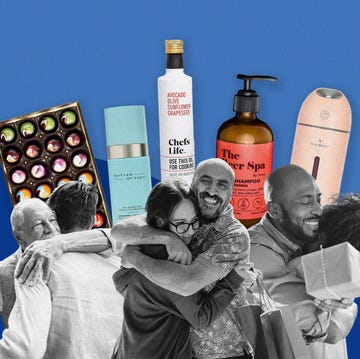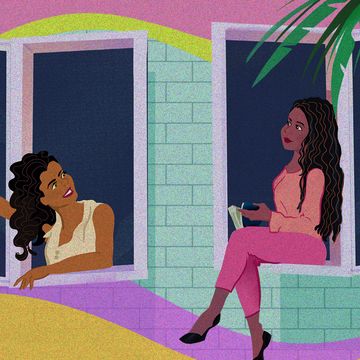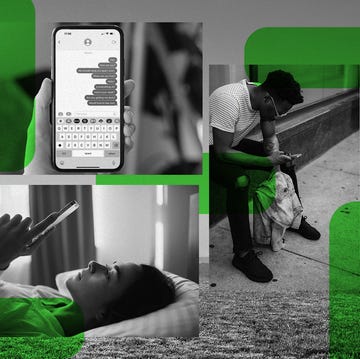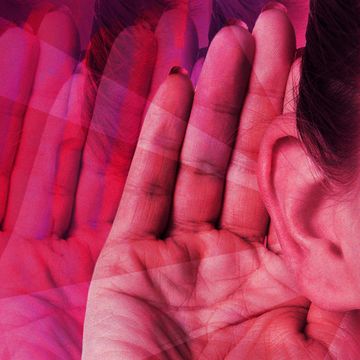When Larissa May was a sophomore at Vanderbilt University, the culture shock of college didn’t seem to wane throughout her second year away from home. The creative, bright student found herself struggling to fit into the intense collegiate environment around her, so she turned to Instagram.
May would unlock her phone and retreat to the social media platform to soothe herself. The app slowly transitioned from a place of comfort to a crutch. She started spending 10 to 13 hours a day on the platform, her home feed serving a toxic content cocktail that magnified her complicated emotions. “I was just trying to cope, and I didn’t really have the strategy,” May says. “It was like being addicted to someone punching you in the face every day. That’s what it felt like.”
After May spent days at a time alone in her room, her resident assistant suggested she talk to a mental health professional at school who could help her with what she was going through. “They asked me about drugs, sex, alcohol, and the people I spent my time with,” May recalls, “but they didn’t ask me about the drug that was in my pocket, which was my phone.”
In investigating how technology amplified and accelerated her innermost feelings, May realized she could help others going through similar situations. She decided to share her story — those issues that she was encountering offline that no one was seeing online. “This idea that social media is only half the story,” she says, “ultimately sparked a movement of young people all over the world.”
In 2015, May started the digital wellness nonprofit group #HalfTheStory. The goal isn’t for people to totally stop using their devices but to embrace them in more healthy and balanced ways. “Our mission,” the now-28-year-old mental health advocate explains, “is rooted in a word that we use and choose very carefully — empowerment — to give the next generation the tools they need to go from mindless to mindful consumption online.”
Through policy advocacy, grassroots organizing, and education, the pro-tech pioneers at #HalfTheStory champion making digital well-being and mental health resources accessible to everyone, especially young people logging on to the internet for the first time. The nonprofit is responsible for creating Social Media U, an in-school curriculum-based program that provides training and tools on how to balance the relationship with technology and social media. It also puts together events like the Global Day of Unplugging, screen-free weekends, and interactive murals asking such questions as “Who are you when the world isn’t watching?”
“The average American teenager will spend 30 years of their life behind a screen,” May says, pointing to a 2019 report by Common Sense Media. “To me, that’s why I’m doing this work.” What May has learned from her nonprofit work is how much shame is linked to young people’s relationship with technology. “It’s very detrimental to them and their own relationships with it because shame creates fear, and it also prevents people from really showing up and talking about what they’re going through.” The reality is that all people with smartphones are susceptible to becoming hooked on social media.
What is social media's psychological power?
For most people, devices are non-negotiable for communication and connection — and that desire is natural. Being social is at the core of the human experience, according to Teodora Pavkovic, a psychologist, digital wellness expert, and director of community engagement at the school filtering software company Linewize.
“Our brain was built exactly for that purpose,” Pavkovic says. “We can’t mature, grow, and develop into adult human mammals without connecting with other people.” Social media makes for an efficient tool for that purpose, especially those in marginalized communities or with loved ones living far away. However, it becomes a bigger issue when app developers go overboard in an effort to keep users constantly connected.
Julie Albright, a digital sociologist and author of Left to Their Own Devices: How Digital Natives Are Reshaping the American Dream, has witnessed firsthand how the spike in screen time affects mental health. “We saw a rise in anxiety and depression,” the University of Southern California professor and lecturer says, “the highest rates in 30 years, in fact.”
Social media founders and engineers are highly trained in persuasive design, social psychology, and behavioral change, Albright notes. “All the people who develop these technologies have gotten very savvy about how to manipulate our attention and how to get us in and stay for longer and longer periods of time.” she says. “We’re in an attention economy now.”
Mobility has also expedited behavioral attachments to social media. “At first,” Albright notes, “when people talked about addiction with the internet, computers were plugged into the wall.” The game changer is now having the capabilities of a computer instantly accessible in a pocket.
Notifications are also a major contributor to prolonging social media attachment. If a person sees an icon or message saying there’s something new and exciting for them — whether it’s actually exciting — the brain is inherently wired to seek out new information.
“It’s like Pavlov’s dogs,” Albright says, referencing the 1897 study where it was discovered that dogs salivated at the sound of food coming before they ever saw it. “You hear a bell, and you’re going to get a treat. How many people look at their phones when they hear that bell go off?” Whether by bell or buzz, these cleverly crafted psychological tactics are connected to the dopamine hit our brains get, or as Albright calls it, “the feel-good center in our brains.”
Albright points out that many social media platforms, especially Instagram and TikTok, rely on movement and color, both major psychological drivers of attention. The apps’ short-form video features combine and amplify what the brain loves most: visuals that move and are multicolored.
When all of these attributes are combined, it’s akin to the psychology of playing a slot machine. The mechanism of pulling the lever, pushing the button, hearing dings, seeing flashing lights, and feeling the possibility of hitting a jackpot is not dissimilar to social media, where an emotional reaction to a post, pic, or video like a smile or tears can feel like winning in the brain.
“Psychologists call that process random reinforcement,” Albright says. This wait-and-anticipate model, she points out, is one of the most powerful behavioral drivers that keep users coming back for more. “[The majority] of people don’t say, ‘I won. Let me get out of here now.’ They go, ‘Maybe I can win again?’ and they pull that lever or they push that button.”
Unlike a slot machine that requires money to keep playing, there is no inherent finality to social media. “It’s limitless in that sense,” Pavkovic notes. “There are no boundaries.” The human brain doesn’t like being in a state of not knowing, she says, and likes to seek out more information and answers when possible.
The vast majority of social media platforms capitalize on that attachment by constantly recommending new content. In 2018, YouTube’s product chief disclosed that 70 percent of the videos that people were watching on the platform were coming from recommendations. “It wasn’t things they were actively seeking out,” Pavkovic says. “We don’t notice how little control we have.”
What makes social media unhealthy?
It’s not merely the design that causes users to develop an attachment, addiction, or dependency on social media. Oftentimes, there is a signifier of another psychological or pathological issue. “Like any behavioral addiction,” says social media addiction scholar and researcher Troy Smith, “there is some reason why the person is drawn to [the drug] to start with.”
In recent research, Smith found that many people go on social media to overtly or covertly seek out positive emotions, rid themselves of unpleasant emotions, or escape their environment. This is especially common for those experiencing feelings of low self-esteem, isolation, or loneliness, similar to May’s experience.
When May received treatment for social media addiction, she discovered that she was also living with a number of untreated mental illnesses. “I was navigating all of them within the digital world,” she says. “It finally got to a point where my social media became the shield between me and the world but also my own emotions.”
Signs of a growing attachment or addiction can be isolating yourself to spend more time on your phone, lying to receive access to your phone, and neglecting other areas of your life, such as work, education, and sleep. “In some cases, there’s even withdrawal when a person physically feels frustrated being away from their devices,” Smith says. “They cannot focus when they’re doing other activities, so they will likely cut the activities short or avoid activities so they could be online.”
With more free time this holiday season, it may be easier for many people to become overly attached to social media. Between unrealistic ads and feel-good photos, May says navigating the digital world can be especially difficult for those with a history of eating disorders, self-esteem issues, family dysfunction, or financial problems. “You have to understand,” she says, “what are your biggest struggles? Is it loneliness? Is it your self-esteem or body image? Is it the financial aspect?”
How can you balance social media use?
“At the end of the day, not all screen time is created equal,” May says. Not all phone usage is bad or unhealthy, and the answer to a healthy level of social media use isn’t to chuck a phone into the nearest body of water and never use it again.
May describes digital well-being as a spectrum that everyone who owns a device is on. There are a number of aspects that contribute to where a person sits on the spectrum, whether it be social, emotional, environmental, economic, or cultural. Those outside factors can affect a relationship with technology over time.
“The bottom line is taking back control,” Pavkovic says, “not just your time, which is one of the easier things to see, but you’re really taking back control of your mind, focus, and attention. Your focus and attention are two of the biggest things that social media is trying to take from you and trying to capitalize on.”
When we see social media as a tool and not as an extension of the self, we can rebuild pathways to healthy consumption. “Small hinges move big doors,” May says. If someone wants to beat their dependency or attachment, the best way to make lasting change is through small adjustments and balance. Here’s how to improve your digital habits and kick social media addiction for a physical and mental healthier you:
Turn off your notifications
“They’re not there by mistake,” Pavkovic says. “It’s very much there intentionally to get you to engage, have fun, and stay there as long as you can.” If you see one, you’re more likely to click it. You can avoid being sucked into your social media apps by going into your phone settings and turning off all the notifications associated with them.
Make it difficult
Create a healthy barrier between you and the platforms by making them less accessible. “Take your social media apps, and put them a couple of screens behind and into a little folder so you really have to think about it,” May recommends. She also suggests logging out of your account each time you’re done.
Go gray
Colors can prompt different emotions and also have a strong effect on attention. “Your brain is interested in as much stimuli as possible,” May says, “so when you remove the color from your phone, it’s suddenly going to be a lot less interesting to go on social media and email.” To remove the temptation of color, toggle the setting on your phone that transforms the entire display into gray scale.
Identify your intention
Oftentimes, you can gauge if you’re overconsuming content by how it’s making you feel. “First, identify what your experience is on whatever the platform is,” Pavkovic advises. “How much of it is good? How much of it is not that great? Be really clear around that.” Then, pause and think about what you want out of each session.
Give yourself a cap
Once you’re on an app, it can become challenging to know when to stop. “You have to figure out where to stop by yourself, and that’s one of the big issues generally with the internet,” Pavkovic says. “There are no naturally built-in stop signs.” Set an alarm for how long you’d like to be on your phone — and abide by it.
Create sacred spaces
A University of British Columbia study conducted on 300 people found that when phones were on the table during meal settings, participants felt more distracted and bored, and it reduced how much they enjoyed spending time with the person at the table with them.
“It’s like a drug addict having a pile of whatever their drug of choice is sitting on the table,” says Albright, who suggests designating rooms or areas where your phone isn’t allowed at susceptible hours of the day, such as mealtime and bedtime. This not only creates a more intentional use of your technology, but it also allows you to connect with the people around you.
Be selective
Pavkovic recommends choosing only a handful of accounts to check every day. “Whatever it is you like engaging with, keep that up, but don’t do any of the other things,” she says. Also, avoid the app’s recommended content, which will keep you engaged for longer. “Proactively seek out the one or two accounts that you still want to continue looking at,” Pavkovic adds.
Go outside
“Over time,” Albright says, “artists, writers, musicians, composers, and religious figures have all recognized the beauty of nature and the sublime.” From trees and mountains to the stars and vastness of the ocean, the feeling of being small can be a great reset for the human mind. “Spending more time in nature, taking a walk on the beach or a hike,” she says, “helps us to calm our nerves.”
Focus on daily use
While a total tech detox can be restorative, it’s actually better to reduce daily screen time overall than to go off the grid for a singular chunk of time. In a 2022 Journal of Experimental Psychology paper, researchers found that it’s more beneficial to reduce daily screen usage by one hour than to do a seven-day phone break.
Address the underlying problem
If your social media usage causes you to isolate or begins to impede your daily life, Smith recommends seeking out a mental health professional who can professionally identify what is contributing to the addictive behavior and assist you on a healing path.
“Saying that you want to stop is easy, but then actually doing it is a different story because you’re going to have withdrawal, just like if you were doing some actual physical drug,” Smith says. “You’re going to want to go back, feel that longing to go and use the service, like something is missing. You need to have someone else that you feel comfortable going to who will keep an eye on you to help you stay on track.”
Mia Brabham is a staff writer at Shondaland. Follow her on Twitter at @hotmessmia.
Get Shondaland directly in your inbox: SUBSCRIBE TODAY
